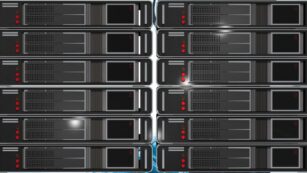In today’s digital age, understanding server performance is crucial for businesses and developers alike. Server insights provide a comprehensive look into server operations, offering valuable data on performance metrics, resource utilization, and potential bottlenecks. This information helps ensure that servers run smoothly, efficiently, and securely.
What Are Server Insights
Server insights are detailed analytics that provide comprehensive data on various aspects of server performance. These insights cover key metrics like CPU usage, memory consumption, disk I/O, and network traffic. By analyzing these parameters, administrators can detect inefficiencies and anomalies.
Key Metrics:
-
 CPU Usage: Measures the percentage of processing power utilized over time, identifying overloads or underuse.
CPU Usage: Measures the percentage of processing power utilized over time, identifying overloads or underuse. -
Memory Consumption: Tracks RAM usage, helping pinpoint memory leaks or excessive usage by applications.
-
Disk I/O: Monitors read/write speeds and data throughput, locating slow storage issues.
-
Network Traffic: Gauges data sent and received, flagging potential network congestion.
Benefits of Server Insights:
-
 Proactive Issue Resolution: Server insights help identify issues before they escalate, reducing downtime.
Proactive Issue Resolution: Server insights help identify issues before they escalate, reducing downtime. -
Optimized Resource Allocation: Insights guide optimal distribution of resources, improving efficiency.
-
Enhanced Security: Monitoring can spot unusual activity, aiding in early threat detection.
-
Improved User Experience: Ensuring smooth server operations enhances the end-user experience by reducing latency and downtime.
-
Small Business Websites: Track and optimize server resource usage to support growing traffic.
-
Large Networks: Monitor multiple servers to maintain network stability and performance.
-
Application Developers: Analyze server performance metrics to fine-tune applications and improve response times.
Understanding and leveraging server insights is vital for maintaining efficient, secure, and reliable server operations.
Key Features Of Server Insights
Server insights offer various features to maintain efficient, secure, and reliable server operations. Here are some key aspects:
Real-Time Monitoring
 Real-time monitoring offers instant visibility into server activities. It enables administrators to track CPU, memory, disk I/O, and network usage as they happen. Real-time alerts help in quickly identifying and addressing performance issues or security threats.
Real-time monitoring offers instant visibility into server activities. It enables administrators to track CPU, memory, disk I/O, and network usage as they happen. Real-time alerts help in quickly identifying and addressing performance issues or security threats.
Performance metrics provide detailed reports on resource utilization. Key metrics include CPU load, memory consumption, disk read/write speeds, and network traffic. Monitoring these metrics helps in pinpointing bottlenecks and optimizing resource allocation.
Historical Data Analysis
Historical data analysis allows evaluation of trends over time. By examining past performance, administrators can forecast future needs and make informed decisions. Data logs help in identifying recurring issues and fine-tuning system performance.
Benefits Of Using Server Insights
Utilizing server insights provides key advantages that enhance overall server performance and reliability.
-
Proactive Issue Detection
Leveraging real-time monitoring, server insights enable instant identification of anomalies and potential issues. For instance, unexpected spikes in CPU usage alert administrators to investigate and resolve problems before they affect end-users. -
Optimized Resource Allocation
Server insights offer detailed analytics on resource usage. Understanding CPU, memory, and disk I/O patterns allows administrators to optimize resource allocation. For example, they can redistribute workloads to underutilized servers to improve efficiency. -
 Enhanced Security
Enhanced Security
Detecting unusual network traffic patterns is possible through server insights. Unusual activity, like unexpected data transfers, signals potential security breaches. Administrators can then implement necessary security measures immediately. -
Improved User Experience
By analyzing server performance metrics, organizations can enhance application performance. Faster response times and reduced downtime directly contribute to a better user experience. Regular monitoring ensures that services remain responsive. -
Cost Efficiency
Monitoring resource utilization trends helps in predicting future needs. By understanding past usage patterns, organizations avoid over-provisioning, reducing unnecessary costs. Efficient resource management translates to significant cost savings. -
Informed Decision-Making
Historical data analysis aids in strategic planning. Evaluating long-term trends in server performance informs decisions on hardware upgrades or scaling operations. Data-driven insights lead to better planning and resource management. -
Compliance and Audit Readiness
Server insights facilitate easier compliance with industry standards. Detailed logs of server activities provide necessary documentation for audits. Having comprehensive records ensures that organizations can demonstrate adherence to regulatory requirements.
Incorporating server insights into server management practices ensures proactive problem resolution, optimized operation, and enhanced security, all of which contribute to reliable and efficient server performance.



